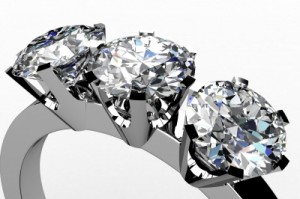Recent Posts
How diamonds are enhanced – the techniques for diamond enhancement
Posted on

Diamond Clarity Enhancement is done to take a lower clarity grade natural diamond up to a much higher (sometimes near flawless) clarity grade. Diamonds are enhanced using a special technique and unique precision equipment. To enhance a diamond we first have to cut and polish it, determine its base clarity grade and only then the enhancement can begin. Not all enhancement treatments are aimed at clarity improvement. Some treatments are color oriented (such as: color irradiation and color annealing) and they are designed to make the diamond’s colors more vibrant and fancy.
However, the most common diamond enhancement treatment is the clarity treatment (also known as “purity enhancement”), which involves either laser drilling to remove micronic flaws. Or fracture filling to make the tiny cracks (Cleavage), found in almost every diamond, invisible to the naked eye or even under magnification. Sometimes the Clarity Enhancement will be performed by using both The Fracture Fill, and the Laser Drill.
Both laser drilling and fracture filling techniques were developed around the same time (late 1970′s, early 1980′s) and have been in use all over the world since.
Laser drilling
Laser drilling for diamonds refers to the use of high precision infrared lasers to selectively drill and remove black carbon inclusions (present in almost every natural diamond). The laser is used to drill a very fine tube in the diamond, thus cutting a path to the black carbon crystal inclusion. Once the inclusion is reached by drilling the diamond is soaked in a special solution of acid to dissolve the carbon. The bore holes are microscopic so debris and dirt cannot get “back inside” the diamond. These drilling signs are invisible and only a trained jeweler can detect them when inspecting the diamond under a microscope. Laser drilled diamonds can be GIA certified.
Fracture filling
Tiny cracks, or “Cleavages” are very common inside diamonds, especially when taking into consideration the process Mother Nature undergoes to create them and the journey a rough diamond has to make all the way up to the earth’s crust to be “born”. The pressure under the earth’s crust is so enormous that almost all diamonds have microscopic hairline fractures, also known as “feathers”. Fracture filling for diamonds is a technique derived from the one used on green emeralds since the time they were discovered. In fact every gemstone can be fracture filled and usually is because any natural mineral would bare the same signs of pressure as diamonds do.

The process involves injection of microscopic amounts of material (some form of chemical) into the cracks. The filled cracks are only visible to a trained gemologist under microscope. In the event that the diamond is exposed to extreme heat of 400 Degrees Celsius, the enhancement might become compromised. In other words, a filled diamond might “sweat out” the filling under a jeweler’s torch, leading to degradation of clarity of the diamond. This is why most major laboratories, including GIA refuse to certify fracture filled diamonds. However, the enhancement process has been proven to be permanent for regular use.
 Loading... Please wait...
Loading... Please wait...
 USD
USD


